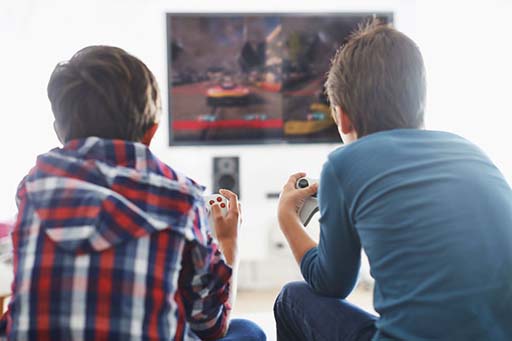3.2.2 The good, the bad and the ugly
Although Daphne Bavelier suggests that video games can be extremely popular and supportive to children and their learning, not everyone takes this view. Since it is still early days in terms of the volume of research, there are as yet no definitive answers.
Consider some of the psychological evidence around the positive and negative aspects of gaming from an article focused on younger children (three to six years old), The positive and negative effects of video games [Tip: hold Ctrl and click a link to open it in a new tab. (Hide tip)] from the Raise Smart Kid website.
Positive aspects may include:
- developing children’s problem-solving and logical thinking
- improving hand–eye coordination, fine motor and spatial skills
- encouraging quick thinking and decision making
- improving memory and concentration and the ability to engage in multitasking.
Negative aspects may include:
- screen time binging is bad for the eyes
- violent video games are likely to increase aggressive thoughts, feelings and behaviours
- video games can lead to attention problems and greater distractibility
- they can lead to social isolation and less time spent in other activities
- they can encourage children to confuse reality with fantasy
- they can be detrimental to children’s health, for instance in obesity or video-induced seizures.

